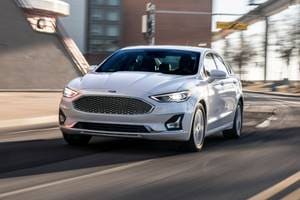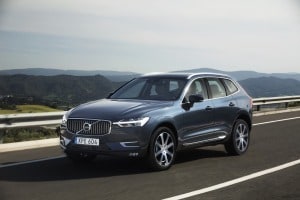Know Before You Buy
Market Segment
What exactly is a luxury car? It used to be simple. Luxury brands sold luxury cars that offered features, performance and technology that you couldn't get from the less expensive mainstream brands. These days, however, mainstream brands offer vehicles with many of the same amenities that used to be exclusive to luxury brands. It's a fine line that is getting harder to define, but here are some of the basic parameters that will help you navigate the market.
Price
Luxury cars range from the upper $20,000s to more than a million dollars for some exotics. In general, the luxury sweet spot is in the $40,000 to $60,000 range — that is where the most popular sedans, coupes, convertibles and SUVs reside. For that money, they are usually sufficiently equipped to be deemed legitimately luxurious.
Performance & MPG
The typical luxury vehicle offers better performance than a non-luxury vehicle of comparable type. In the past, better performance usually meant a commensurate drop in fuel economy, but in recent years, sizable efficiency gains (mostly due to turbocharging smaller engines and more advanced transmissions) have resulted in a significantly reduced trade-off. The luxury segments, with rare exception, encompass the majority of high-performance options. Today, high-powered sedans, coupes and even SUVs accelerate with the type of ferocity that used to be the realm of exotic sports cars.
Safety
The latest and greatest safety features can be found in most luxury cars, but interestingly in recent years, many of these items remain options on luxury cars but have become standard or at least more accessible on many non-luxury models. These features include rearview cameras, forward collision warning, adaptive cruise control, lane departure warning and intervention, and blind-spot monitoring. There are also features such as drowsy driver warning systems and night-vision assistance that uses infrared cameras to show you what's lurking in the woods ahead.
Features
Luxury cars are the test bed for the features that will eventually make their way into the rest of the automotive landscape. And even if they don't introduce a certain feature, they frequently showcase upgraded or enhanced versions. At the same time, the majority of features that were once deemed luxury in nature — heated seats, panoramic sunroofs, advanced safety tech — are widely available in non-luxury cars. As such, it's usually more important to note how well those features are executed because all aren't created equal.
Drivetrain
All-wheel drive is becoming increasingly common in luxury cars, but it doesn't necessarily indicate that one car is better than another. Sometimes it is applied to improve handling and acceleration (more often with front-wheel-drive cars). Sometimes, it is applied to improve the poor-weather traction (more often with rear-wheel-drive cars). Sometimes it does all of the above. Generally speaking, though, we would recommend getting all-wheel drive only if you really need it given the extra cost involved and the resulting drop in fuel economy.
Roominess
For the most part, luxury vehicles do not offer quite as much passenger or cargo space as non-luxury vehicles of comparable exterior dimensions. Usually it's the greater emphasis on styling that takes a toll on interior space.
Cost to Own
Most luxury cars will be more expensive to insure, and repairs and maintenance are more expensive due to the higher cost of lower-volume and/or more complicated parts, as well as higher-quality service at a luxury car dealership. Premium fuel is often required on higher-performance models. On the upside, luxury cars usually come with a four-year warranty; three years is the norm for non-luxury brands. Some may also include free scheduled maintenance for a period of time. Depreciation can also be greater, especially for the highest-dollar luxury coupes and sedans.





